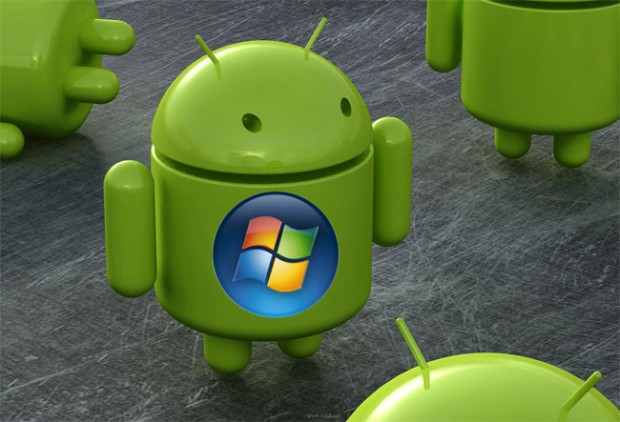 NEWS
NEWS
 NEWS
NEWS
 NEWS
NEWS
![]() Last week’s CES was notable for the conspicuous absence of one of the world’s largest consumer electronics firms – Microsoft. Having pulled out of CES 2013, devices running Windows software were almost totally absent at this year’s edition. Instead, CES 2014 saw Android-based desktops and laptops begin to gain momentum, and they’re now shaping up to be the first real threat to Microsoft’s dominance in the PC market.
Last week’s CES was notable for the conspicuous absence of one of the world’s largest consumer electronics firms – Microsoft. Having pulled out of CES 2013, devices running Windows software were almost totally absent at this year’s edition. Instead, CES 2014 saw Android-based desktops and laptops begin to gain momentum, and they’re now shaping up to be the first real threat to Microsoft’s dominance in the PC market.
But of course, Android will only be a threat so long as there’s a PC market to speak of, and things don’t look so good in that department. PC shipments have been steadily declining for years thanks to the rise of smartphones and tablets, most of which happen to run on Android.
Last week, research firms Gartner and IDC reported the worst-ever slump in PC sales, as reported by the Wall Street Journal:
“World-wide PC shipments fell 10% last year, research firms Gartner Inc. and IDC said Thursday, the worst-ever sales slump for the industry. Both companies have been tracking personal computer sales since the 1980s. Computer makers have been hurt as consumers and businesses spend more time on smartphones and tablets, and are slower to replace aging PCs.”
Meanwhile, Gartner makes the rather ominous prediction (for Microsoft) that only 15 percent of internet-connected devices sold in 2014 will run Windows software – and that’s Windows’ true market share right there, just 15 percent.
Having tried desperately (and failed miserably) to compete with Android by becoming a ‘hardware and services’ company, perhaps the time has come for Microsoft to get back to its software roots. And that of course means Microsoft will have to do the unthinkable and get into bed with Android.
Why? Because Microsoft is steadily losing its grip on the enterprise, with more than 90 percent of all business apps running on iOS last year, according to The Wall Street Journal. It’s also losing ground to Android in a big way due to Google’s super-aggressive nature. When threatened with “thermonuclear war” by the late Apple co-founder and CEO Steve Jobs, Google responded by putting its services and apps everywhere, even on iOS and Windows platforms. The fact that Google’s services and apps are some of the best in the world, and are everywhere, means that Google is winning the race.
On the other hand, Microsoft has been anything but aggressive. Unlike Google, which was more than happy to contribute to other platforms, Microsoft has avoided Android like the plague. It’s refused to make any apps for Android, with the exception of its belated Office 365 service (which was only made available for phones).
This is a far cry from yesteryear, when Microsoft’s old mission was to put “a computer on every desk and in every home, running Microsoft software.”
Microsoft’s new “mission” is woefully inadequate by comparison: “to create a family of devices and services for individuals and businesses that empower people around the globe at home, at work and on the go, for the activities they value most.” Sure, Microsoft is achieving that mission – it’s made lots of devices and services. But hardly anyone is using those devices and services because of the company’s stubbornness and refusal to embrace other platforms.
![]() What Microsoft must do is become far more aggressive in getting its “services” out there – and the best way to do so is to make native Android versions of every application it makes.
What Microsoft must do is become far more aggressive in getting its “services” out there – and the best way to do so is to make native Android versions of every application it makes.
Microsoft needs to do what Google has done – make great software and make sure it’s running on everything. If it does, this could have a roll-on effect as Android users who find themselves loving Microsoft’s software might later decide they want to try Microsoft-powered devices too, thereby giving Windows the boost it so desperately needs. What Microsoft mustn’t do any longer is continue to fear Android. It’s wary of bolstering Android’s success because it’s scared to lose the race, but the fact is that Microsoft has already lost. It’s current tactic of delaying or refusing to put its apps on Android simply isn’t working, and Android users will look for alternatives.
What Microsoft needs to focus on its software. Its new CEO should embrace the company’s old mission statement and kill off the new one. Only when Microsoft commits to putting its software on every single computer again – be it iOS, Android or Windows systems – will it be able to halt its rapid decline.
Support our mission to keep content open and free by engaging with theCUBE community. Join theCUBE’s Alumni Trust Network, where technology leaders connect, share intelligence and create opportunities.
Founded by tech visionaries John Furrier and Dave Vellante, SiliconANGLE Media has built a dynamic ecosystem of industry-leading digital media brands that reach 15+ million elite tech professionals. Our new proprietary theCUBE AI Video Cloud is breaking ground in audience interaction, leveraging theCUBEai.com neural network to help technology companies make data-driven decisions and stay at the forefront of industry conversations.